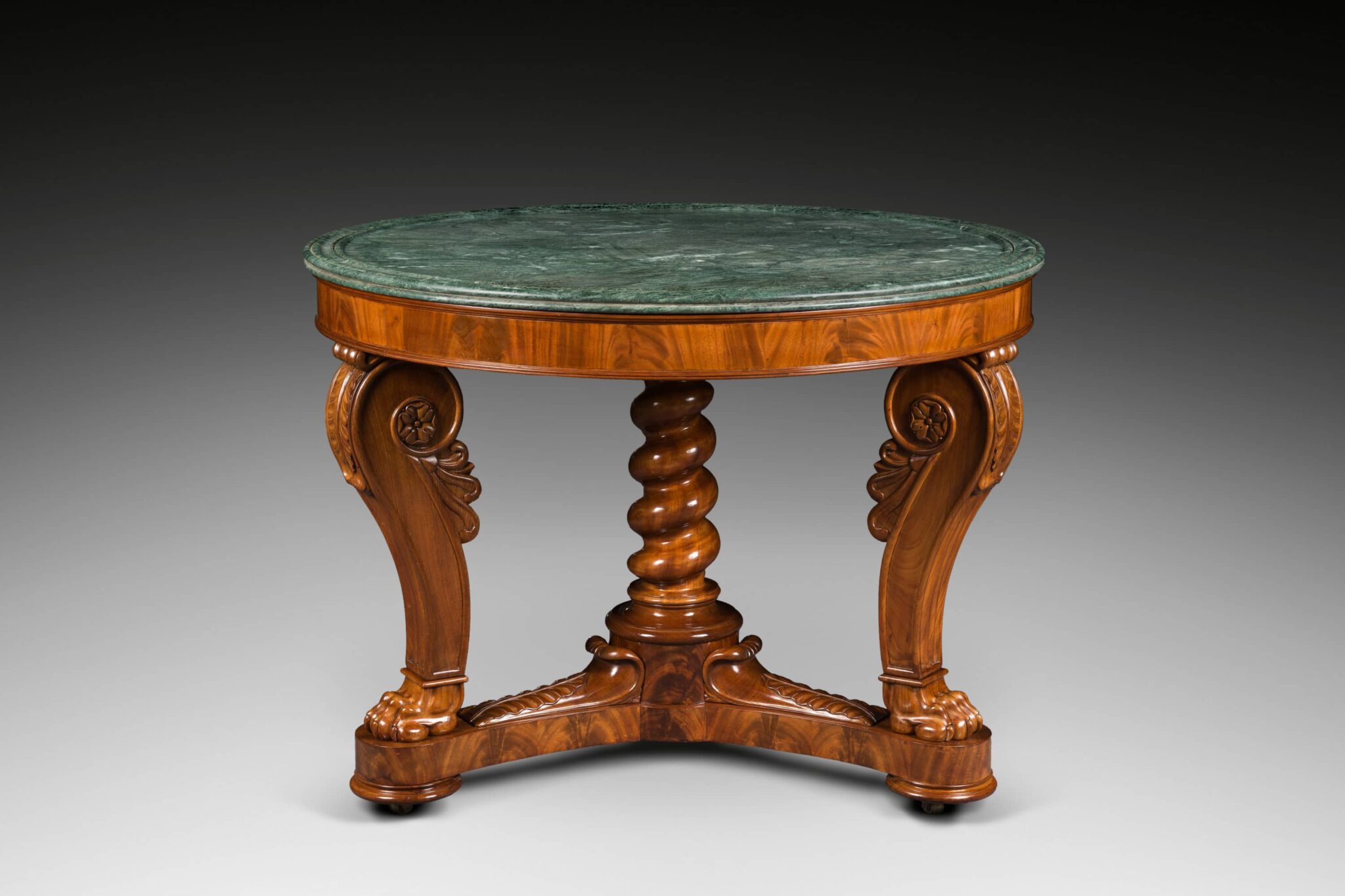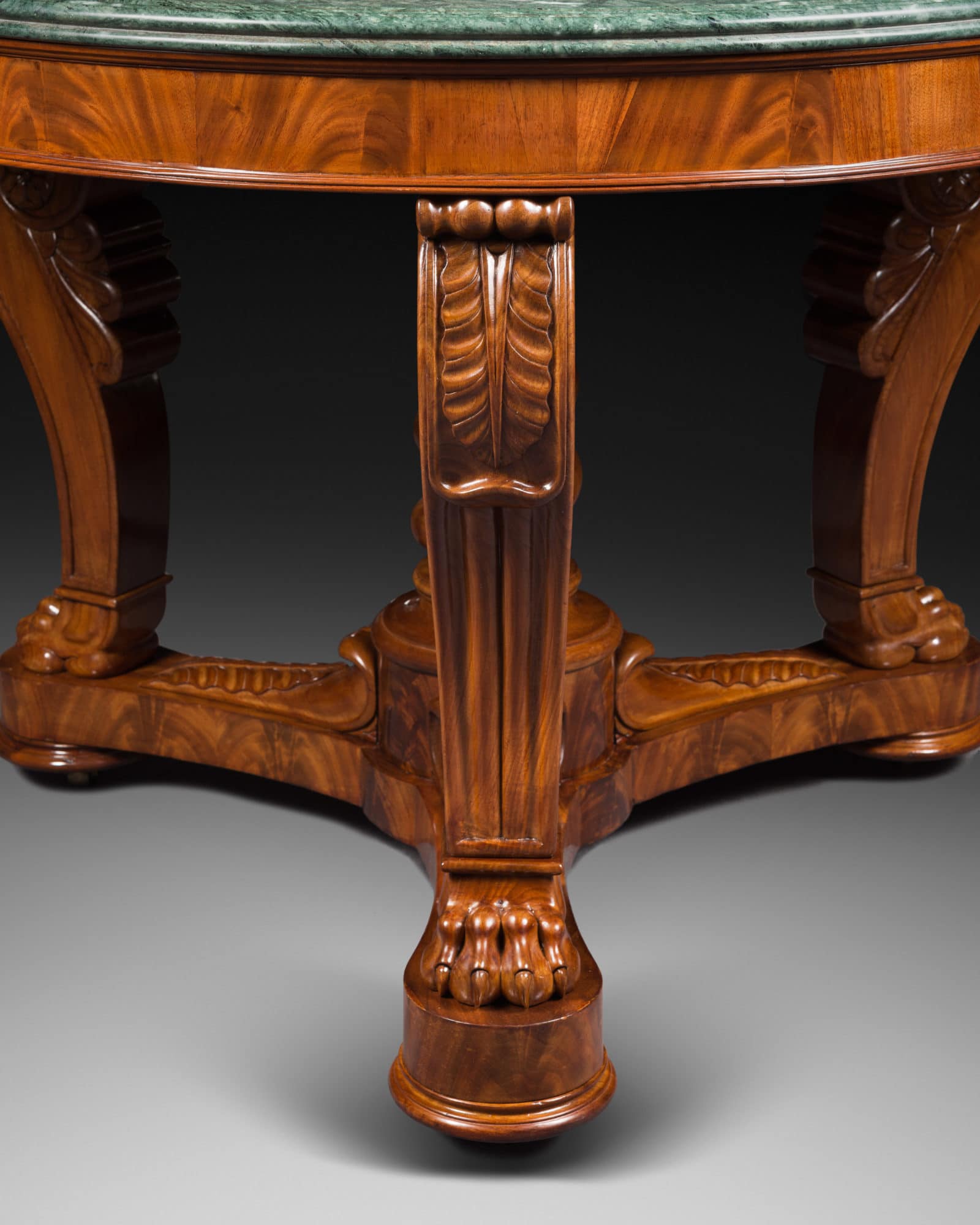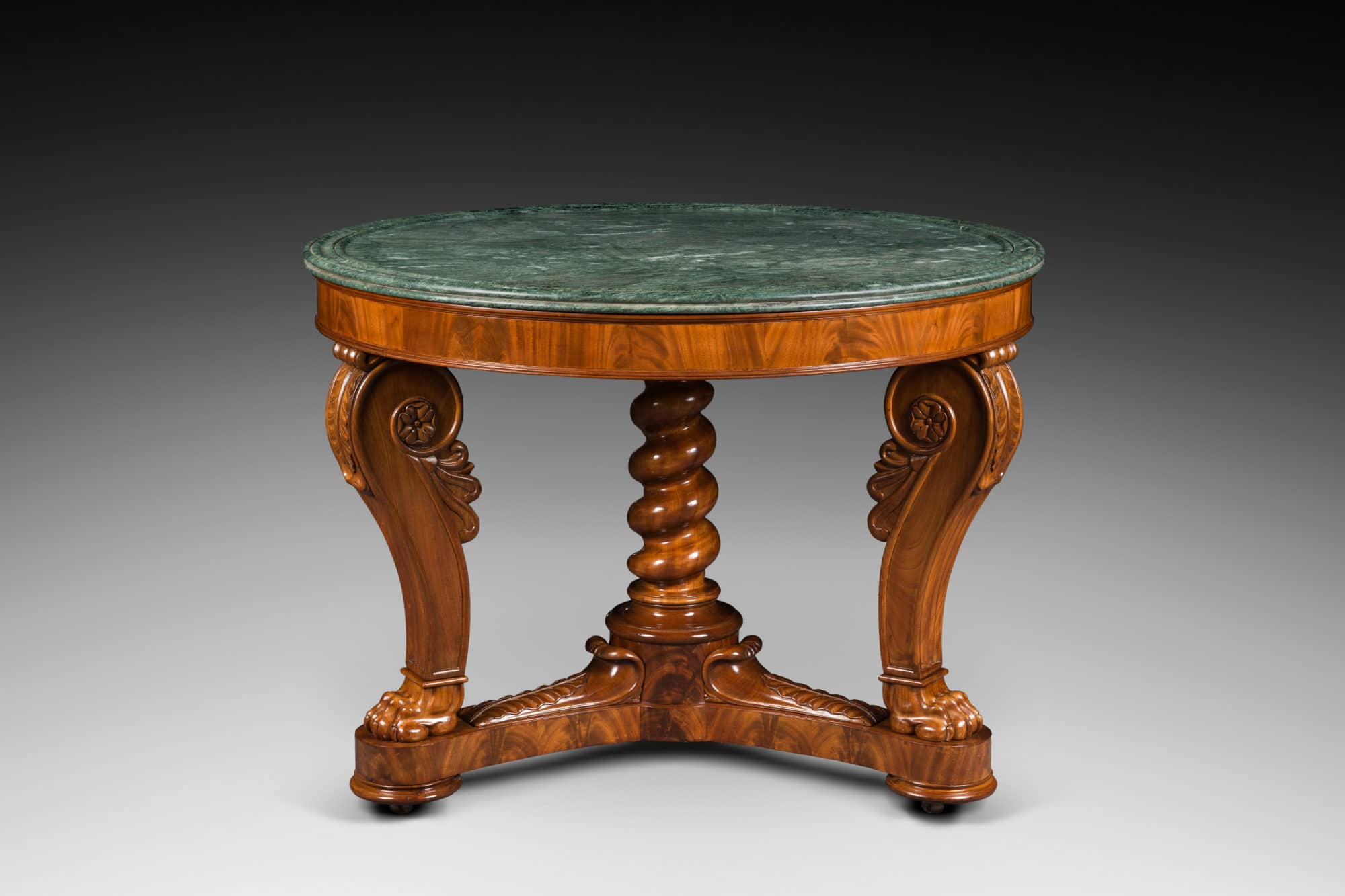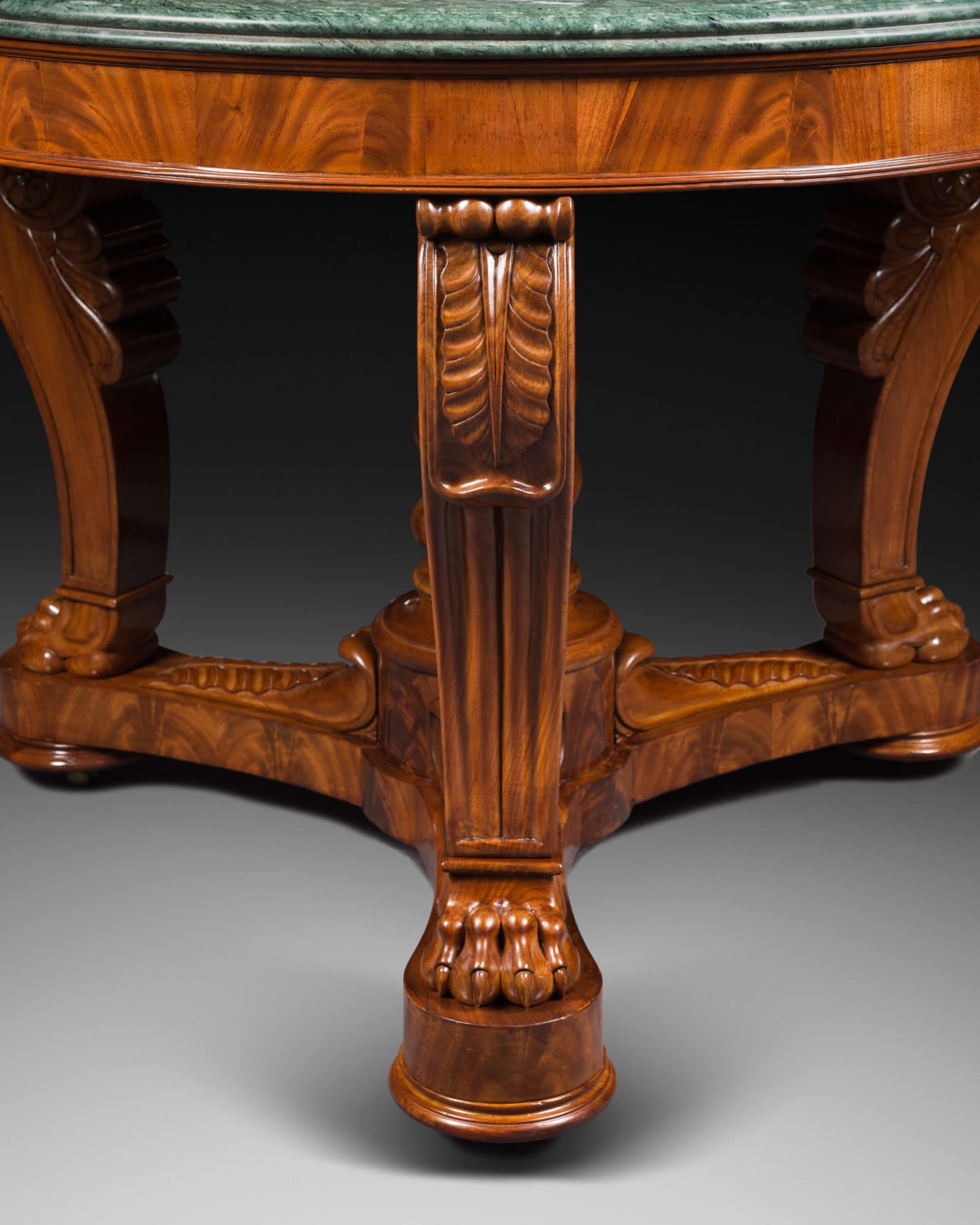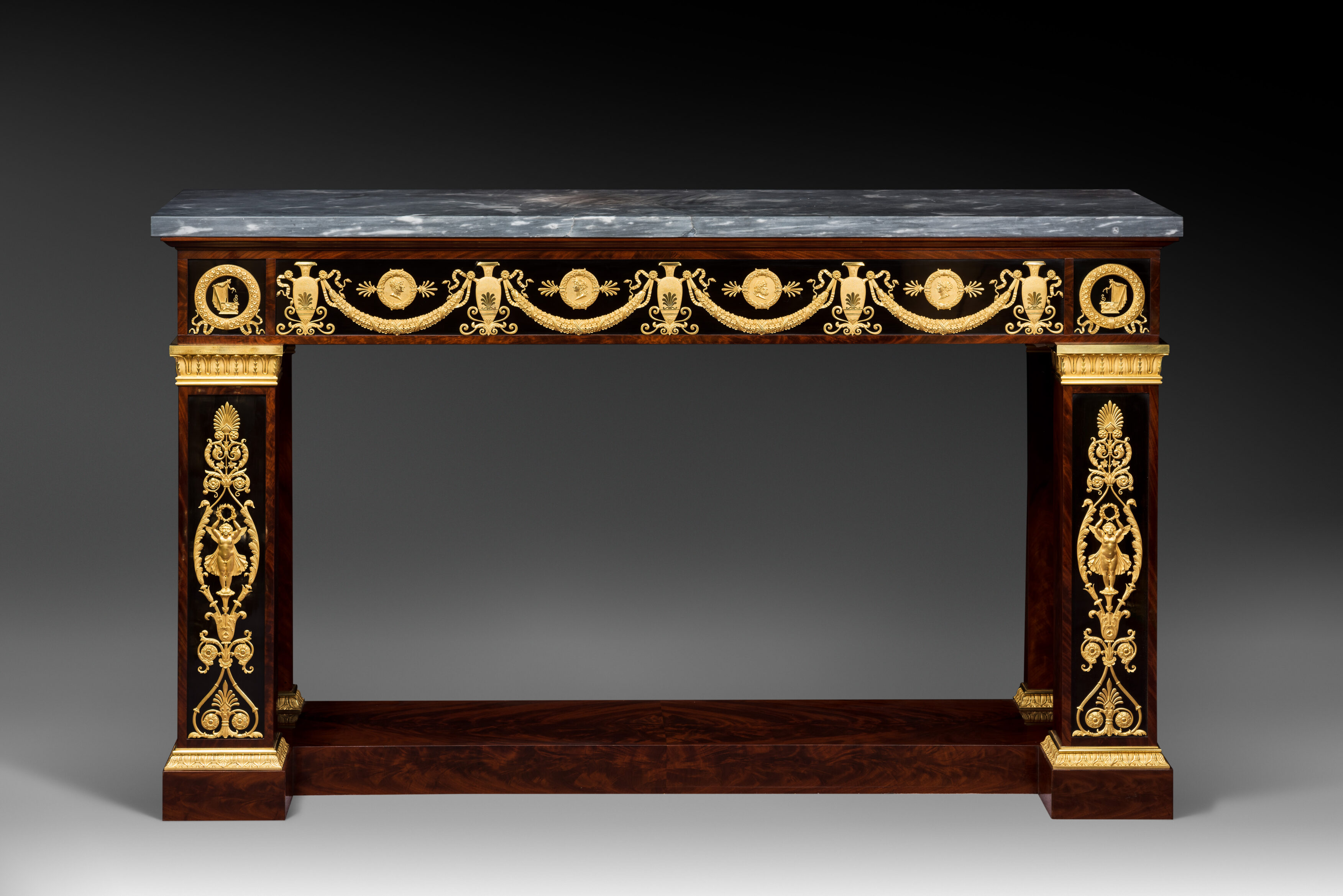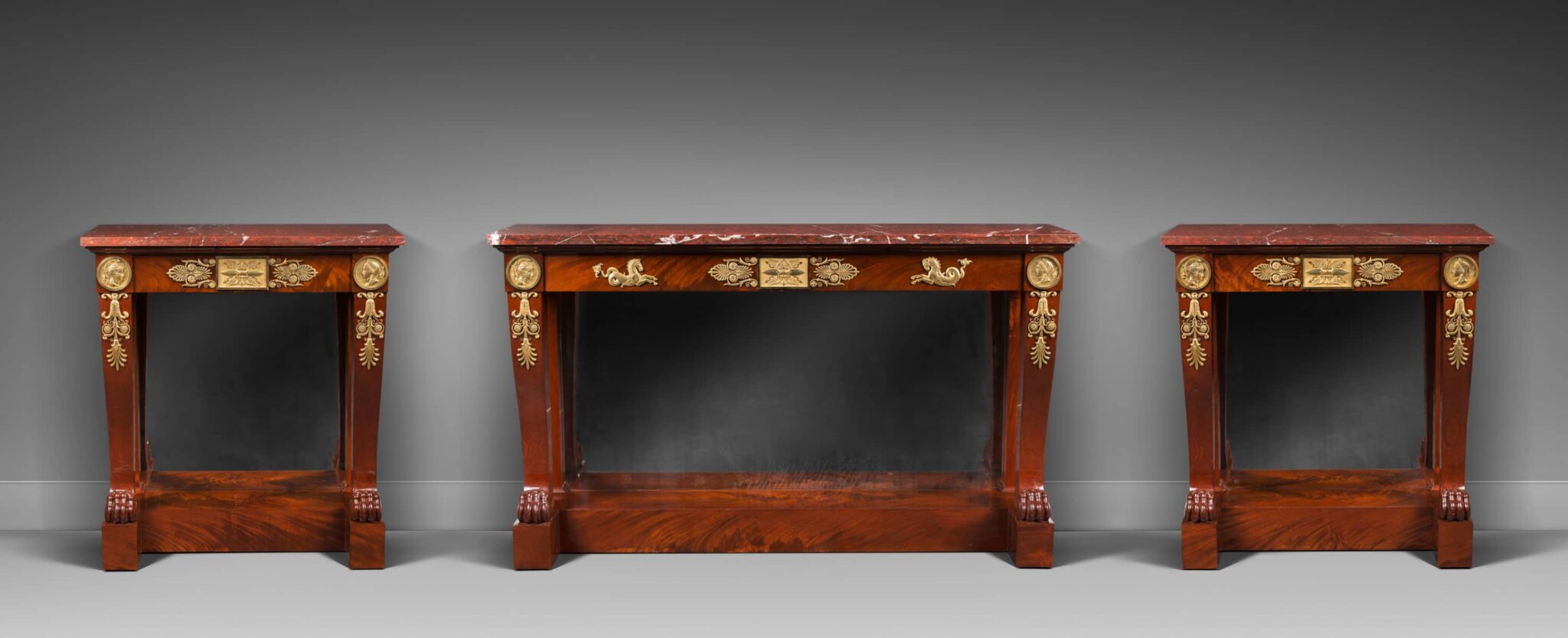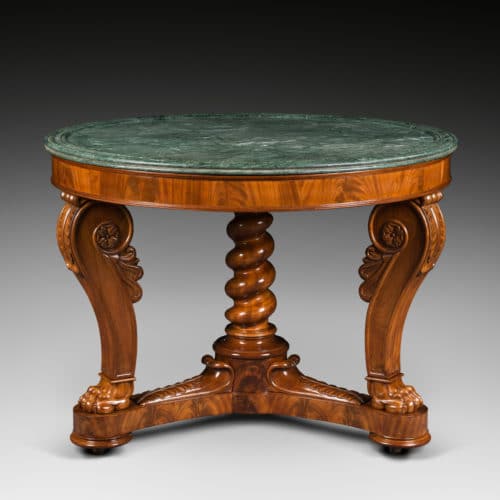Important and Massive Neoclassical Mahogany Guéridon
The round, molded green marble tabletop rests upon an entablature with a molded apron The magnificent antique-style base is made up of three molded legs in the form of volutes centered by rosettes, which terminate in lion’s paws. The legs are adorned with wide, finely detailed leaves, double volutes and half-palmettes. In the center of the stretcher is a spiral-turned foot that is supported by a small concave roundel with plain toruses. The legs and the central foot are linked by a triangular stretcher that is decorated with stylized waterleaves with rounded ends that rest upon three flattened molded feet.
The remarkable design of this important guéridon, and in particular the architectural treatment of its base and the absence of bronze mounts, emphasizing the table’s strong lines and the quality of the mahogany veneering, rank it among the pieces of furniture that are most characteristic of the imperial esthetic. That style was encouraged by Napoleon as well as by the influential Parisian connoisseurs of the early 19th century. It represents an esthetic furniture style that was characteristic of one of the most remarkable workshops of the day – that of Jacob Desmalter, the maker of the present rare guéridon. While the curved lines of its legs are reminiscent of designs by architects Percier and Fontaine, the Jacob workshop is known to have produced this type of guéridon during the Restoration on commission by the royal Garde-Meuble. Among these tables, one model was delivered in 1837, destined for the bedchamber of Queen Marie-Amélie at Trianon (illustrated in P. Arizzoli-Clémentel and J-P. Samoyault, Le mobilier de Versailles, Chefs-d’œuvre du XIXe siècle, Editions Faton, Dijon, 2009, p. 346). A second example, from the furnishings of King Louis-Philippe at the Château de Neuilly, is illustrated in D. Ledoux-Lebard, Le mobilier français du XIXe siècle, dictionnaire des ébénistes et ménuisiers, Les éditions de l’Amateur, Paris, 2000, p. 361.
Jacob-Desmalter (1770 - 1841)
François-Honoré-Georges Jacob, dit Jacob-Desmalter may be considered to be the most important Parisian chair makers of the first quarter of the 19th century. The youngest son of the famous cabinetmaker Georges Jacob (1739-1814), in 1798 he married Adélaïde-Anne Lignereux, the daughter of the famous merchant Martin-Eloi Lignereux. He first became known for his talent as a draughtsman, and in 1796, he went into partnership with his older brother Georges II Jacob (1768-1803). Together they took over their father’s workshop in the rue Meslée, calling their firm Jacob Frères. After the death of his brother, Jacob Desmalter went into partnership with his father, who had begun working again, and changed his stamp. For nearly a decade, they were important suppliers of the Imperial Garde-Meuble, as well as of influential collectors of the time. However, in 1813 the Jacob firm went bankrupt, due largely to the Imperial administration’s failure to pay them regularly. In 1825, after several failed attempts at recovery, he sold his business to his son in exchange for a comfortable life annuity of 6,000 francs per year. Finally free of the demands of running a business, he began to travel, going to England, where George IV asked him to help decorate Windsor castle. He died in the rue Cadet in Paris, on August 15, 1841.
